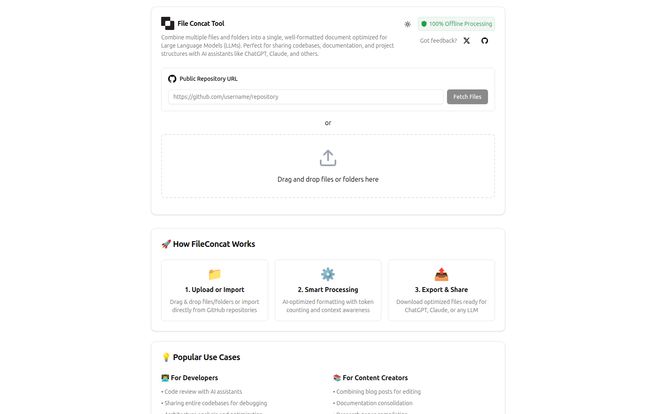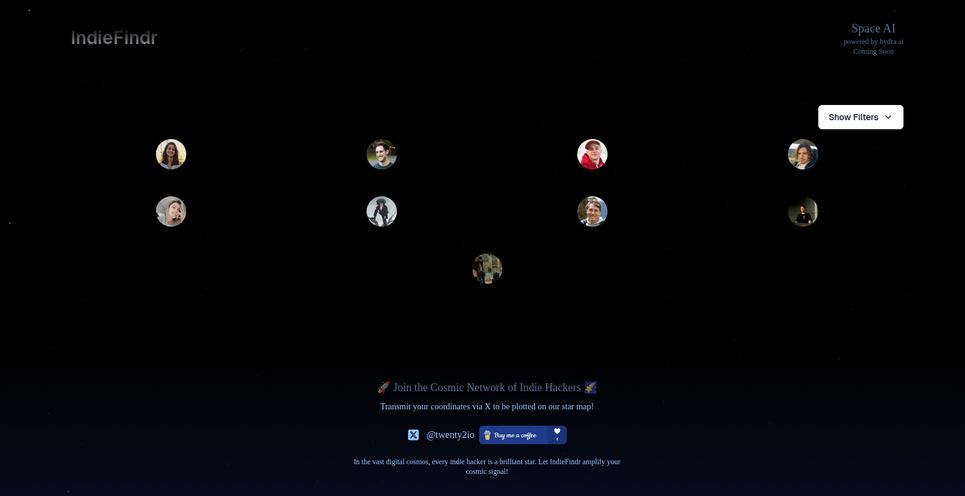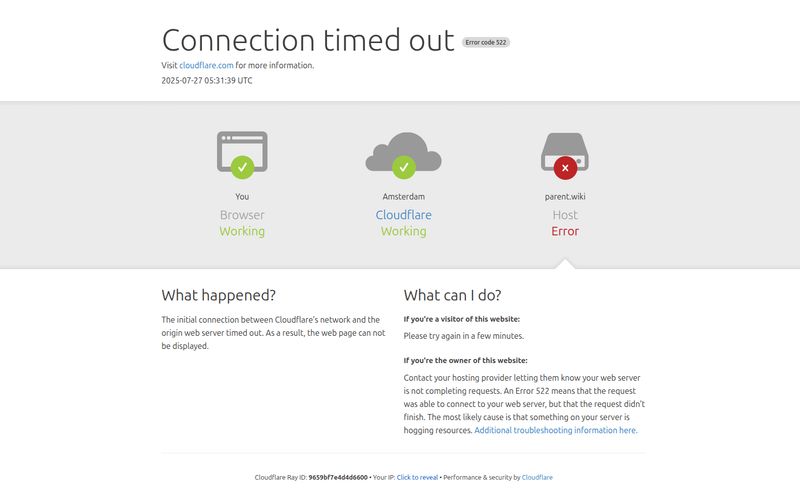As someone who lives and breathes SEO, CPC, and traffic trends, I spend an ungodly amount of my day talking to AI. Whether it’s brainstorming campaign angles with ChatGPT or asking Claude to refactor some god-awful legacy tracking script, Large Language Models (LLMs) are a permanent part of my workflow. But there’s one thing that drives me absolutely, positively, up the wall.
The copy-paste dance.
You know the one. You’ve got a project spread across five... no, ten different files. A CSS file here, a JavaScript file there, a Python script, a few markdown documents with notes. You need the AI to understand the entire project, but its memory is shorter than a goldfish's. So you start copying... and pasting... and copying... and pasting, one file at a time, desperately hoping the AI hangs on to the context. It’s a nightmare. It’s the digital equivalent of trying to explain a movie to someone by showing them one frame at a time. The context window struggle is real, my friends.
So when I stumbled upon the File Concat Tool, I was intrigued. A free, offline tool that promises to solve this exact problem? My skepticism meter was buzzing, but my curiosity won. And I gotta say, I’m pretty impressed.
So What Is This Thing, Anyway?
At its heart, the File Concat Tool is beautifully simple. Think of it as a digital stapler, but one that’s been purpose-built for AI. You give it a bunch of separate files—code, documents, configs, whatever—and it intelligently combines them into a single, neatly formatted text block. You can then copy this one block and paste it directly into your AI assistant of choice.
It sounds basic, I know. But the magic is in the execution. You can either drag and drop your files and folders right into the browser, or—and this is a killer feature for developers—just paste in a public GitHub repository URL. The tool fetches the files and gets to work.

Visit File Concat Tool
It's like having a super-efficient personal assistant. You just hand them a messy pile of papers from your desk and say, "Here, make sense of this for my meeting." And poof, they return with a perfectly ordered, stapled report. This tool is that assistant, prepping your project 'papers' for your 'meeting' with the AI.
Why Offline Processing Is a Security Game-Changer
Here’s the part that made me go from “hmm, neat” to “okay, I need this.” The File Concat Tool is 100% offline. All the processing happens locally, in your browser. Your files never get uploaded to a server. They never leave your machine.
Let that sink in for a minute. In an age where we're all (rightfully) paranoid about pasting proprietary code or sensitive company data into some random online text box, this is huge. I’ve seen enough horror stories about data leaks to be cautious. Having a tool that guarantees my data stays private isn’t just a feature; it’s a prerequisite. Many online tools offer convenience at the cost of security, but this one gives you both. It’s a trade-off I no longer have to make, and frankly, it's a massive relief.
Putting It Through Its Paces
A tool is only as good as its real-world application, right? So I took it for a spin on a couple of typical tasks that usually cause me a headache.
For the Coders and Developers
My first test was a small web project with a jumble of HTML, CSS, and JavaScript files. I was trying to debug a weird rendering issue that only happened on certain devices. Normally, I'd have to paste each file into ChatGPT, explaining how they all connect. It's tedious.
Instead, I just dragged the whole project folder into the File Concat Tool. It instantly ignored the image files and `.DS_Store` junk (thanks to its 'Smart Filtering') and spit out a beautifully structured text block. It included clear markers for each file path, like `--- src/js/main.js ---`. I pasted this single block into Claude, asked my question, and got a coherent, context-aware answer almost immediately. No more back-and-forth. It just worked. The GitHub integration is even slicker for open-source work.
For the Writers and Content Strategists
Next up, a content task. I'm working on a long-form pillar page about Q4 marketing trends. I have a draft in a `.txt` file, my research notes in a `.md` file, and a bunch of stats in a `.json` file. I wanted to see if an AI could help me identify thematic gaps and suggest new sections.
Again, I just dropped all three files into the tool. It concatenated them, and I fed the output to the AI with the prompt, "Based on the following draft, research notes, and data, what key themes am I missing?" The quality of the suggestions was noticeably better than when I tried this piecemeal. The AI had the complete picture, and its insights reflected that. It's brilliant for consolidating research or getting a holistic review of a large document.
The Good, The Bad, and The Mostly Good
No tool is perfect, but this one comes pretty close to it for its specific job. In my experience, its benefits far outweigh any minor quibbles.
| What I Love | What Could Be Better |
|---|---|
| It's Free. Genuinely, no-strings-attached free. No sign-up, no ads, no nonsense. | It's Manual. You still have to initiate the process by selecting files or pasting a URL. |
| Iron-Clad Security. The offline-first approach is a massive win for anyone handling sensitive info. | Focused Functionality. It does one thing—combine files. Don't expect a full-blown IDE. |
| The Token Counter. An awesome little feature for us nerds who track token usage for API calls. So thoughtful. | |
| Dead Simple UI. There is zero learning curve. If you can drag a file, you can use this tool. |
Some might argue that its focused nature is a drawback. But I see it as a strength. It’s not trying to be a bloated, all-in-one platform. It's a sharp, effective utility that solves one problem exceptionally well. It knows its lane and stays in it, and I respect that.
Is It Really Free? What's the Catch?
I know what you're thinking. Nothing good in tech is ever truly free. There’s always a catch, right? A hidden subscription, a data-selling scheme, something.
From everything I can see, the File Concat Tool is the exception. It’s an open-source project, built as a utility for the community. The fact that it works offline reinforces this; there's no server cost for the creator to maintain by selling your data because your data never reaches them in the first place. It's just a clean, simple, and yes, completely free tool. It's a refreshing change of pace, honestly.
Frequently Asked Questions
I poked around and gathered some of the most common questions people might have.
- Is the File Concat Tool completely free?
- Yep. 100% free with no limits, hidden fees, or registration required. I was surprised too.
- How secure is my data again?
- As secure as it gets. The entire process runs in your web browser on your local machine. Your files are never uploaded to any server, so your proprietary code and private documents stay private.
- What kind of files can I use with it?
- It handles a wide range of common files for developers and writers. Think code files (JS, TS, Python, Java), documentation (MD, TXT), and configuration files (JSON, YAML), among others. It’s smart enough to filter out binary files like images or executables.
- Can it handle a massive codebase from a large project?
- Absolutely. The tool has a smart chunking system that can handle large codebases by splitting them into appropriately sized pieces for different AI models. So you don't have to worry about overwhelming the AI's context window.
- Is there a limit to how many files I can combine?
- Practically speaking, no. The limit is more about what the AI on the other end can handle in its context window. The tool itself is designed to process large numbers of files and even entire repositories without breaking a sweat.
My Final Verdict
In a world of overly complex SaaS platforms and subscription fatigue, the File Concat Tool is a breath of fresh air. It’s not flashy. It won’t revolutionize your entire business. But it will solve a deeply annoying and persistent problem for anyone who works with LLMs on a regular basis.
It saves time, improves the quality of AI interactions, and crucially, respects your data privacy. For me, that’s an unbeatable combination. It has earned a permanent spot in my browser bookmarks. It’s one of those simple, elegant utilities that just makes my day a little bit easier. And sometimes, thats all you can ask for.
Reference and Sources
- OpenAI's ChatGPT - A popular AI assistant.
- Anthropic's Claude 2.1 - Information on context windows from another leading AI provider.
- React GitHub Repository - An example of a large, public repository the tool could process.



